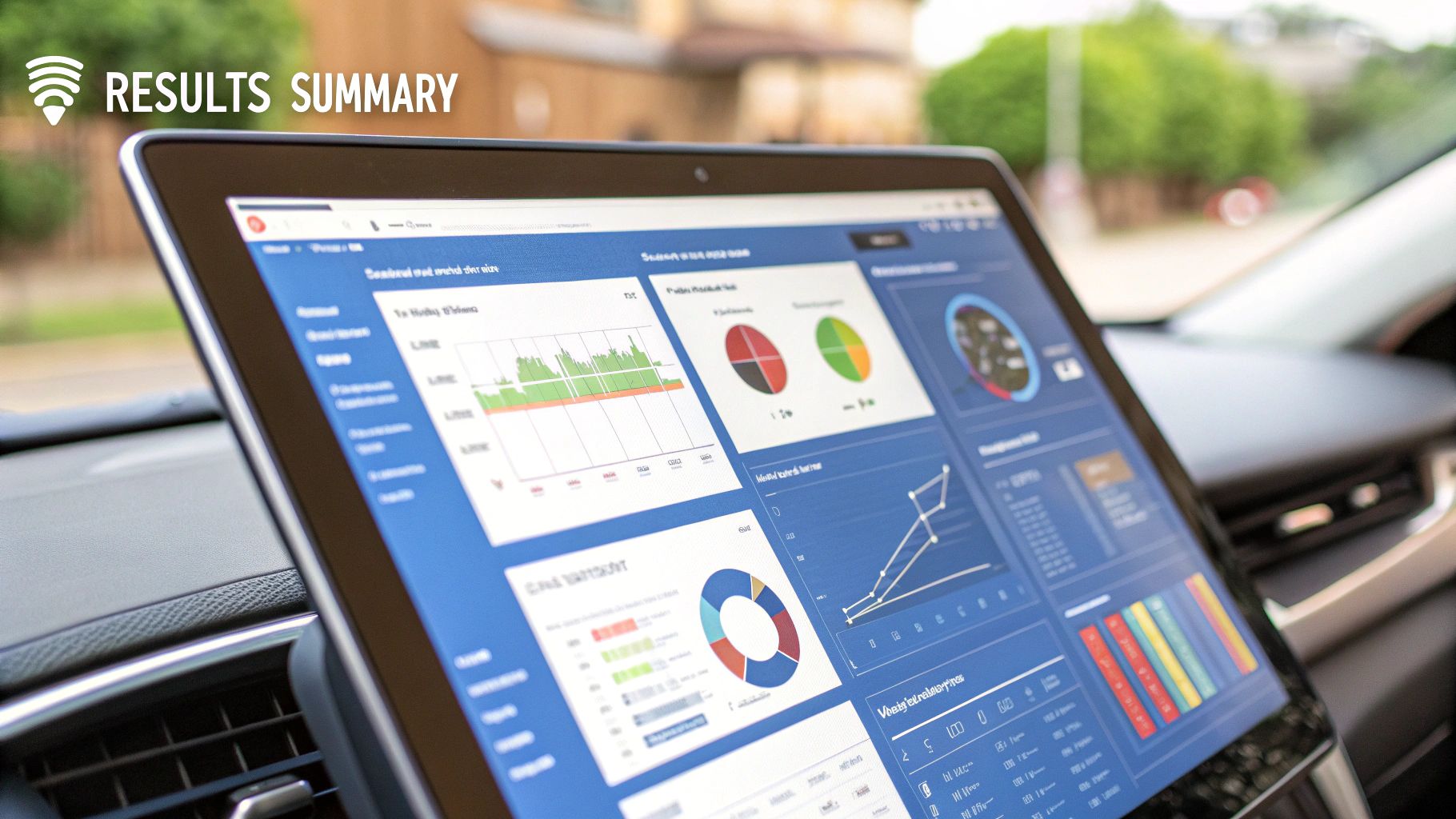Mastering Throughput in Performance Testing: A Comprehensive Guide for Modern Teams
When your application faces a surge in user requests—think flash sales, product launches, or peak travel booking times—its ability to handle the load directly impacts user satisfaction and revenue. Throughput testing is a critical tool for teams looking to ensure smooth performance under real-world conditions.
This guide dives deep into what throughput means, why it matters, and how to integrate it into your continuous performance strategy. You’ll learn the tactics, tools, and frameworks you need to confidently navigate the complexities of modern application performance.
Throughput 101: Understanding the Core Concept
Throughput is the rate at which your system completes transactions or processes requests within a specific timeframe. In simpler terms, it’s how many units of “work” (like HTTP requests, database calls, or order transactions) your system can handle per second or minute.
For example, if your application processes 300 requests in 5 minutes, that’s 60 requests per minute, or 1 request per second (1 TPS). By knowing your current throughput, you establish a performance baseline. This baseline is your starting point for optimization—without it, you’re guessing rather than making data-driven decisions.
Why Throughput Matters
Imagine an online retailer during a holiday promotion. If the site can’t handle the influx of shoppers, pages will stall, carts won’t update, and orders fail to complete. The result? Lost revenue and frustrated customers.
Throughput directly correlates to user experience. More throughput means more successful interactions completed in less time. Achieving a high, stable throughput:
- Improves user satisfaction: Faster performance fosters trust and encourages conversions.
- Supports growth: As user numbers climb, a robust throughput ensures systems scale gracefully.
- Reduces stress under pressure: Even unexpected traffic spikes won’t derail your application.
When you know your throughput and can maintain it under peak loads, your application—and your business—stays resilient in the face of real-world demands.
Distinguishing Throughput from Load Testing

Load testing and throughput testing are related but serve different purposes:
- Load Testing: Focuses on how the system responds as user numbers increase. It’s about user concurrency and response times.
- Throughput Testing: Focuses on how many transactions the system can complete in a given period. It quantifies capacity rather than just response speed.
For example, if you need to handle 50,000 requests per hour but currently achieve only 40,000, throughput testing pinpoints this gap. After optimization, hitting 52,000 requests per hour shows a clear, quantifiable improvement.
Further reading: How to check throughput: A comprehensive guide
Visualizing Throughput: Turning Numbers into Insights
Data alone can be overwhelming. Charts, graphs, and dashboards transform raw throughput numbers into actionable insights:
- Identify peaks and troughs: Spot when throughput is highest and lowest to understand usage patterns.
- Correlate metrics: Compare throughput against CPU, memory, and network usage to pinpoint where bottlenecks occur. A spike in CPU usage that coincides with a drop in throughput, for example, might highlight a server capacity constraint.
- Track trends over time: Regular monitoring shows how updates, configuration changes, or infrastructure shifts affect throughput. If a code release suddenly drops TPS, you know exactly where to investigate.
Visuals help you move from data to decisions, offering clarity on what actions to take next.
Throughput in the Real World: Continuous Adaptation
Throughput isn’t static. Code updates, new features, shifting user behavior, and infrastructure changes all influence it. Regular testing and monitoring ensure you catch issues early:
- Seasonal traffic changes: Online retailers must handle holiday rushes without performance hiccups.
- Feature launches: New features might strain certain parts of the system. Keeping tabs on TPS reveals when and why performance dips.
- Scaling decisions: Know when to add resources or optimize code paths before performance becomes a bottleneck.
The key is building a habit of continuous throughput monitoring into your workflow. By doing so, you keep performance smooth and users happy as conditions evolve.
Building a Throughput Testing Strategy
A thoughtful strategy puts throughput testing front and center in your performance regimen. This is about more than theoretical metrics—it’s about actionable insights that guide improvements.
1. Establishing a Baseline
Start by measuring throughput under current, typical conditions. This baseline sets the stage for realistic improvement targets. For instance, if you currently support 100 TPS and anticipate a 20% traffic increase next quarter, aim for 120 TPS as a next milestone.
2. Designing Realistic Test Scenarios
Don’t just hammer your system with identical requests. Mirror real usage patterns:
- E-commerce scenario: Majority of traffic might be product browsing, with fewer checkout events. Reflect this ratio in testing to catch real-world bottlenecks.
- Streaming service: Emulate different types of requests—searches, playback requests, metadata lookups—to understand which user actions stress the system most.
By simulating actual user journeys, your throughput measurements become more representative and actionable.
3. Integrating Testing into CI/CD Pipelines
Embed throughput tests into your Continuous Integration/Continuous Deployment (CI/CD) workflow. By doing this:
- Early detection: Catch performance regressions before they impact users.
- Ongoing improvements: Continuously refine code based on data, ensuring each release maintains or improves throughput.
For more details: How to master performance testing strategy for modern applications
4. Resource Allocation & Frequency
Testing too often can drain resources, but testing too infrequently misses problems:
- Before major releases: Validate throughput when changes are substantial.
- Pre-peak periods: Test ahead of known traffic surges (like a Black Friday sale).
- Regular intervals: Even minor updates deserve routine checks to ensure no regressions slip through.
Balance efficiency with thoroughness to maintain a consistent, reliable performance baseline.
Making Sense of Your Performance Metrics
Performance testing is more than collecting metrics—it’s about turning numbers into meaningful insights that guide decision-making.
Identifying Key Metrics
Not all metrics matter equally. Focus on what’s critical to your business goals:
- E-Commerce: TPS during peak sales directly affects revenue.
- Streaming Services: Response times and throughput together dictate user experience. High throughput with poor latency still fails the user.
Choose metrics that align with your priorities. Throughput is powerful, but it must be contextualized with other data like response times, error rates, and conversion metrics.
Visualization: Spotting Patterns at a Glance
Transform raw metrics into intuitive dashboards:
- Time-Series Charts: Show throughput over hours, days, or weeks to catch trends or seasonal effects.
- Comparative Graphs: Overlay CPU and memory usage on throughput charts to diagnose root causes of drops.
A clear visual narrative helps non-technical stakeholders understand why performance matters and how it ties to business outcomes.
Communicating Results to the Entire Team
Good communication bridges technical and business perspectives:
- Avoid jargon: Translate “TPS dropped by 10%” into “We might lose 1 out of every 10 potential sales at peak times.”
- Use visuals and real examples: Show charts and scenario-based outcomes rather than dumping numbers.
By connecting throughput metrics to user impact and revenue, you get everyone on board with performance priorities.
Build a Performance Dashboard
A dedicated performance dashboard unifies metrics—throughput, errors, response times—into one source of truth. With tools like GoReplay, you can:
- Capture and replay real traffic: Test with authentic load patterns.
- Analyze data over time: Confirm if recent code changes improved throughput.
A single pane of glass makes ongoing performance assessments faster, clearer, and more productive.
Integrating Load Testing & Throughput Analysis

Load testing simulates concurrent user traffic, focusing on response times and stability, while throughput analysis zeroes in on raw processing capacity.
Using Both Approaches Together
- Load Testing Insight: Reveals when user counts start degrading performance.
- Throughput Analysis Insight: Shows if your infrastructure can process enough transactions within performance targets.
For example, load testing may indicate page slowdowns with 1,000 concurrent users, while throughput metrics pinpoint that beyond 800 TPS, your database becomes a bottleneck. Combine both views to find not just when performance falters, but why.
Implementing an Integrated Strategy
- Set performance targets: Align throughput and response time goals with business objectives.
- Capture real scenarios: Use GoReplay to reproduce real HTTP traffic.
- Correlate results: If load tests show slow pages, throughput analysis can highlight back-end constraints.
Continuous improvement comes from regularly testing both dimensions—user load and processing capacity—and adjusting before production issues arise.
Continuous Throughput Optimization: The Ongoing Process
Throughput isn’t a “set it and forget it” metric. Performance evolves with each code commit, infrastructure tweak, and traffic pattern shift.
Integrating Throughput Monitoring as a Habit
Make throughput monitoring a part of your development culture:
- Regular check-ins: Assess throughput after each release.
- Alerting & Thresholds: Set alerts for throughput drops outside normal ranges.
Like routine maintenance on a car, consistent checks keep your system running smoothly over the long haul.
Responding to Changes in Real-Time
When alerts signal unusual behavior, investigate immediately:
- Sudden drops: Might indicate a scaling issue or a memory leak.
- Gradual declines: Could suggest growing inefficiencies in code paths.
By catching issues early, you avoid spiraling performance problems that alienate users.
Handling Traffic Spikes Gracefully
Plan for predictable and unpredictable traffic surges:
- Seasonal promotions: Ramp up capacity before holiday campaigns.
- Marketing events: Know your throughput thresholds so you can scale infrastructure proactively.
Sustaining performance during spikes builds trust and safeguards revenue opportunities.
Fostering a Performance-Focused Culture
Throughput optimization isn’t just a tester’s or a developer’s job—it’s everyone’s responsibility:
- Collaborate across teams: Dev, Ops, QA, and business stakeholders must align on performance goals.
- Common language: Everyone should understand what throughput means and why it matters.
Tools like GoReplay simplify this alignment by making realistic test scenarios easy to set up. Accurate tests lead to meaningful discussions and decisive action.
Avoiding Common Throughput Testing Pitfalls

Even well-intentioned teams make mistakes. Avoid these pitfalls:
1. Unrealistic Test Environments
Pitfall: Testing on a staging server that differs dramatically from production yields misleading results. Solution: Ensure test environments mirror production as closely as possible. Same configurations, same capacities—no shortcuts.
2. Ignoring User Journeys
Pitfall: Measuring only simple requests misses complex interactions. Solution: Emulate real user paths. If most users browse products and occasionally checkout, reflect that pattern. This uncovers performance issues that simplistic tests hide.
3. Static Data Equals Artificial Results
Pitfall: Using the same data repeatedly doesn’t reveal how varying inputs affect performance. Solution: Introduce data variety—different query complexities, payload sizes, and user types. This mimics real-life usage patterns for more accurate insights.
4. Misinterpreting Results in Isolation
Pitfall: Focusing solely on TPS might ignore rising error rates or slowing response times. Solution: Contextualize throughput with other metrics. A high TPS but skyrocketing error rate doesn’t indicate success. Look at the full picture.
5. Treating Throughput as a One-Time Check
Pitfall: Running a single test and calling it done misses ongoing changes in performance. Solution: Make throughput testing continuous. Regular checks catch trends and ensure long-term stability.
Pro Tip: Tools like GoReplay replay real production traffic in your testing environment, reducing guesswork and ensuring you’re always basing decisions on realistic scenarios.
Key Takeaways
- Throughput measures capacity: It quantifies how many transactions your system can process per unit time.
- Continuous adaptation is crucial: Throughput can shift with code changes, traffic spikes, and infrastructure updates.
- Integration and communication matter: Blend throughput testing into CI/CD, share clear visuals, and connect metrics to business goals.
- Avoid common pitfalls: Use realistic scenarios, contextualize metrics, and continuously monitor for ongoing performance assurance.
By mastering throughput testing, you empower your team to deliver fast, reliable, and scalable applications—even during the busiest times. This proactive, data-driven approach ensures you’re always ready for the next surge in user demand.
